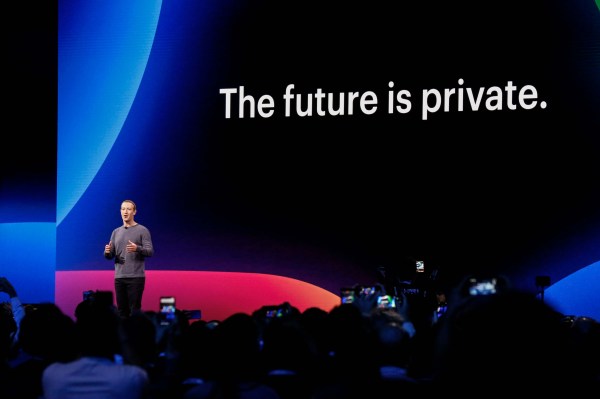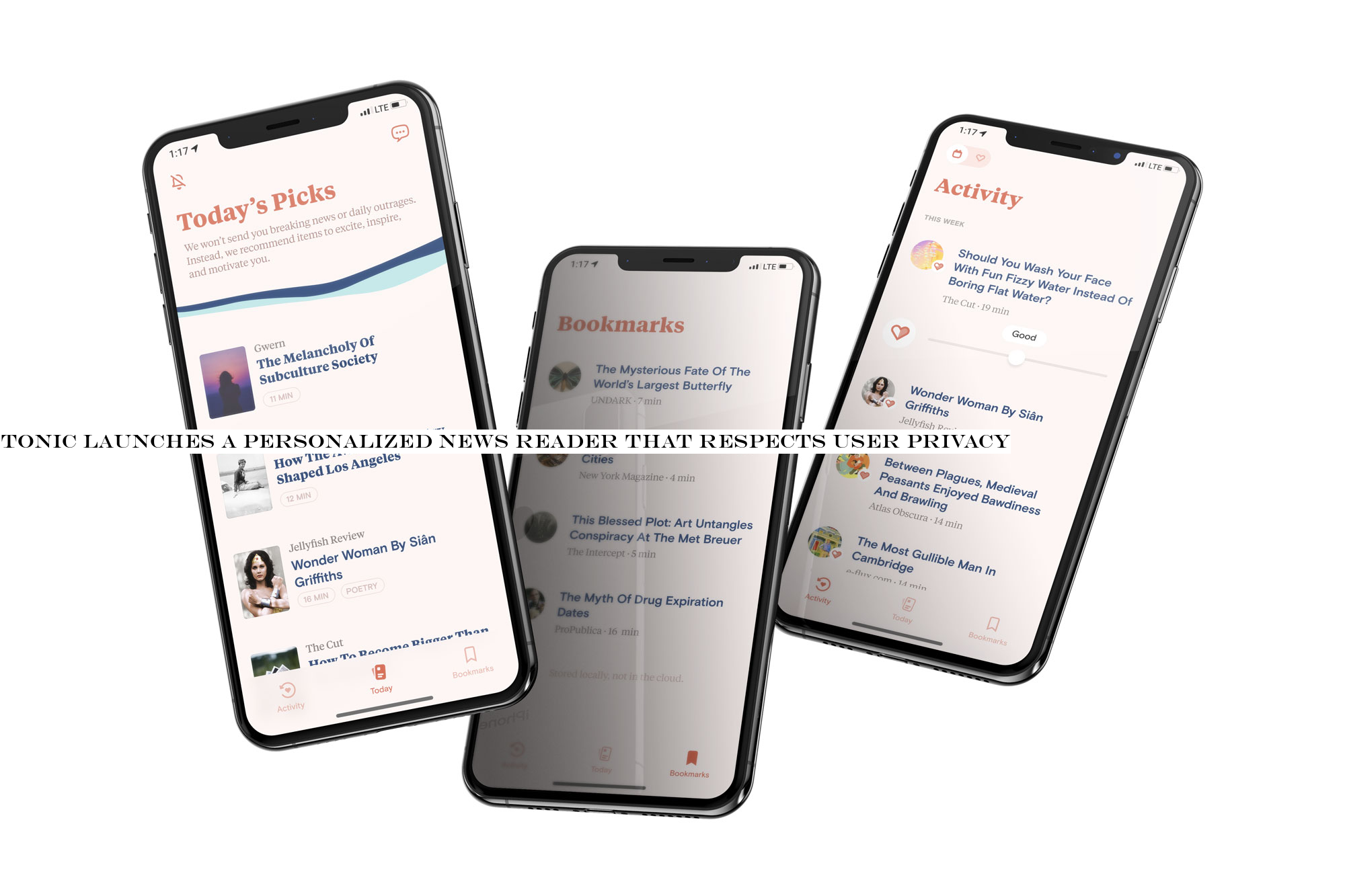Music
Trailers
DailyVideos
India
Pakistan
Afghanistan
Bangladesh
Srilanka
Nepal
Thailand
StockMarket
Business
Technology
Startup
Trending Videos
Coupons
Football
Search
Download App in Playstore
Download App
Best Collections
Technology

Facebook has suspended &tens of thousands& of apps connected to its platform which it suspects may be collecting large amounts of user profile data.
Thata sharp rise from the 400 apps flagged a year ago by the companyinvestigation in the wake of Cambridge Analytica, a scandal that saw tens of millions of Facebook profiles scraped to help swing undecided voters in favor of the Trump campaign during the U.S. presidential election in 2016.
Facebook did not provide a more specific number in its blog post but said the apps were built by 400 developers.
Many of the apps had been banned for a number of reasons, like siphoning off Facebook user profile data or making data public without protecting their identities, or other violations of the companypolicies.
Despite the bans, the social media giant said it has ¬ confirmed& other instances of misusing user data beyond those it has already notified the public about. Among those previously disclose include South Korean analytics firm Rankwave, accused of abusing the developer platform and refusing an audit; and myPersonality, a personality quiz that collected data on more than four million users.
The action comes in the wake of the since-defunct Cambridge Analytica and other serious privacy and security breaches. Federal authorities and lawmakers have launched investigations and issued fines from everything from its Libra cryptocurrency project to how the company handles users& privacy.
Facebook said its investigation will continue.
- Details
- Category: Technology
Read more: Facebook has suspended ‘tens of thousands’ of apps suspected of hoarding data
Write comment (90 Comments)Fujifilm is teasing its forthcoming X-Pro3, the successor to its popular digital rangefinder mirrorless camera, ahead of its official full introduction on October 23. During its X Summit event going on today, the company showed off the X-Pro3 in detailed images (via Fujirumors), revealing for the first time its innovative new rear display design.
The X-Pro3 has an LCD on the back, as do most modern digital interchangeable lens cameras, but itdefinitely unique: The screen is hidden in normal use, facing inward towards the camera back while the outward side of the rear door instead offers the photographer a small OLED &mini screen& that contains only basic info about shooting settings.
The rear display will show details like shutter speed, f-stop, ISO and film simulation and file size settings, and if you want to actually see a preview of the virtual viewfinder image, you&ll need to flip down the screen to reveal the color LCD. The downward flipping display is therefore ideal for doing things like shooting from a low angle, with the photographer looking down to check framing & just like you could do on classic film cameras with waist-level viewfinders.
[gallery ids="1884507,1884508,1884509,1884510"]
The X-Pro3 still offers an electronic viewfinder, but thatalso more akin to film photography vs. digital, since photographers using the camera will be much more likely to either use the viewfinder or shoot waist-level with the flip down screen & while also being able to check their various settings at a glance by quickly pulling the camera away from their eye and looking at the back.
Fujifilmlineup of APS-C digital interchangeable lens cameras have already won many fans thanks to their film simulations, which mimic types of film the company offered previously. The X-Pro3 will focus even more on replicating a film-inspired experience backed by modern digital photographic technology, and will also include a new film simulation called &Classic Negative,& as well.

Other details about the camera include titanium construction, which is going to make it a super durable but lightweight camera, and three different color options to choose from.
 No pricing or availability info is out yet, but we&ll find that out along with full details on October 23.
No pricing or availability info is out yet, but we&ll find that out along with full details on October 23.
- Details
- Category: Technology
Streaming services have made music ubiquitous, driving more exploration by consumers who don&t have to pay for each song or album individually. Musicians are correspondingly able to find their own niche of fans scattered around the world.
(This is the third installment of our EC-1 series on Kobalt Music Group and changes in the music industry. Read Part I and Part II.)
As Spotify gained rapid adoption in his native Sweden in 2006, Kobaltfounder - CEO Willard Ahdritz predicted music streaming and the rise of social media would increasingly undercut the gatekeeping power of the major label groups and realign the market to center more on a vast landscape of niche musicians than a handful of traditional superstars.
Both of these predictions have proven directionally true. The question is to what extent and how are industry players actually realigning as a result?
What musicians need in addition to the administrative collection of their royalties (explained in Part II) is a menu of creative services they can tap for support. KobaltAWAL and Kobalt Music Publishing divisions provide such services to recording artists and songwriters, respectively, and do so on purely a services basis (getting paid a commission but not taking ownership of copyrights like traditional labels and publishers do).
Niche middle class vs. Global superstars

Image via Getty Images / rolfo eclaire
The whole music industry is growing substantially due to streaming musicmainstream penetration in wealthier countries and increased penetration in emerging markets.
As the overall pie is growing, the non-superstar segment of the market is indeed growing faster than the superstar segment, taking over a larger portion of industry royalties.
According to data from BuzzAngle, the top 500 songs in the US in 2018 accounted for 10% of on-demand audio streams — a dramatic decline in market share compared to 2017 when the top 500 songs accounted for 14% of streams. Stepping back, the top 50,000 songs made up 73.2% of all US streams in 2017 but that declined to 70.5% in 2018.
- Details
- Category: Technology
Read more: How Kobalt is banking on music's middle class and DIY stars
Write comment (98 Comments)Personalization technology can lead to better experiences as it allows apps to customize their content for each individual user. But it can also chip away at user privacy. A company called Canopy wants to change that. It has developed a personalization engine that works without requiring users to log in or even provide an email. Instead, it uses a combination of on-device machine learning and differential privacy to offer a personalized experience to an appusers. Now itdemonstrating how this works with the launch of the news reader app, Tonic.
The new app is designed to be completely private, while also learning what you like over time, in order to offer a customized experience. But unlike other personalization engines, all the raw interaction and behavioral data stays on your own device. That means the company itself never see it, nor does any content provider or partner it works with, it says.
As Canopy explains:
What we instead send over an encrypted connection to our server is adifferentially privateversion of your personal interaction and behavior model. The local model of you that goes to Canopy never has a direct connection to the things you&ve interacted with, but instead represents an aggregate set of preferences of people like you. Ita crucial difference for our approach: even in the worst case of the encryption failing, or our servers being hacked, no one could ever do anything with the private models because they do not represent any individual.
Another big differentiator is that Tonic puts you in control over your own personalization settings. This is not typical. If you&ve ever used an app powered by personalization technology, thereprobably been a point where you were recommended a song, video, or a news article, for example, that seemed to be entirely wrong and not representative of something you&d actually like. But you may have been at a loss as to why it was recommended, because most apps don&t detail this sort of information.
Tonic, on the other hand, lets you view, change and even reset your personalization settings whenever you want.

While Tonic is mainly meant to demonstrate of its engine in action — Canopy larger goal is to license the technology — the app itself has several other features that make it worth a look.
The company employs a human editorial team to help select the appnews content, to ensure that itnot offering a bunch of noise, like clickbait or &hate-reads.& It also avoids breaking news and &hot takes,& it says, as itnot designed to be an app you use to track the latest news with urgency.
Instead, Tonic pulls from a diversity of sources with its core focus on bringing you a curated, personalized selection of daily reads to inform and inspire. And in the spirit of digital well-being, ita finite list of articles — not an endless news feed.
&We made Tonic because we were tired of having to give up our digital selves to get great recommendations, and because we wanted to build an alternative to endless feeds optimized for maximum engagement, breaking news, and outrage,& the company explains in its announcement of the applaunch.
The technologyarrival comes at a time when big tech is being investigated for carelessness with user data, and thereincreased attention on user privacy in general. Apple, for example, has made its respect for user privacy a key selling point for its hardware and software.
The New York-based startup was founded by Brian Whitman, formerly the founder of The Echo Nest and a former principal scientist at Spotify. The team also includes several ex-Spotify, Instagram, Google and New York Times execs. Itseed-funded by Matrix Partners, and other investors from Spotify, WeWork, Splice, MIT Media Lab, Keybase, and more to the tune of $4.5 million dollars.
- Details
- Category: Technology
Read more: Tonic launches a personalized news reader that respects user privacy
Write comment (93 Comments)At TechCrunch Disrupt, the original tech startup conference, venture capitalists remain amongst the premier guests.
VCs are responsible for helping startups — the focus of the three-day event — get off the ground and as such, they are often the most familiar with trends in the startup ecosystem, ready to deliver insights, anecdotes and advice to our audience of entrepreneurs, investors, operators, managers and more.
In the first half of 2019, VCs spent $66 billion purchasing equity in promising upstarts, according to the latest data from PitchBook. At that pace, VC spending could surpass $100 billion for the second year in a row. We plan to welcome a slew of investors to TechCrunch Disrupt to discuss this major feat and the investing trends that have paved the way for recording funding.
Mega-funds and the promise of unicorn initial public offerings continue to drive investment. SoftBank, of course, began raising its second Vision Fund this year, a vehicle expected to exceed $100 billion. Meanwhile, more traditional VC outfits revisited limited partners to stay competitive with the Japanese telecom giant. Andreessen Horowitz, for example, collected $2.75 billion for two new funds earlier this year. We&ll have a16z general partners Chris Dixon, Angela Strange and Andrew Chen at Disrupt for insight into the firmlatest activity.
At the early-stage, the fight for seed deals continued, with larger funds moving downstream to muscle their way into seed and Series A financings. Pre-seed has risen to prominence, with new funds from Afore Capital and Bee Partners helping to legitimize the stage. Bolstering the early-stage further, Y Combinator admitted more than 400 companies across its two most recent batches,
We&ll welcome pre-seed and seed investor Charles Hudson of Precursor Ventures and Redpoint Ventures general partner Annie Kadavy to give founders tips on how to raise VC. Plus, Y Combinator CEO Michael Seibel and Ali Rowghani, the CEO of YCContinuity Fund, which invests in and advises growth-stage startups, will join us on the Disrupt Extra Crunch stage ready with tips on how to get accepted to the respected accelerator.
Moreover, activity in high-growth sectors, particularly enterprise SaaS, has permitted a series of outsized rounds across all stages of financing. Speaking on this trend, we&ll have AppDynamics founder and Unusual Ventures co-founder Jyoti Bansal and Battery Ventures general partner Neeraj Agrawal in conversation with TechCrunchenterprise reporter Ron Miller.
We would be remiss not to analyze activity on Wall Street in 2019, too. As top venture funds refueled with new capital, Silicon Valleyfavorite unicorns completed highly-anticipated IPOs, a critical step towards bringing a much needed bout of liquidity to their investors. Uber, Lyft, Pinterest, Zoom, PagerDuty, Slack and several others went public this year and other well-financed companies, including Peloton, Postmates and WeWork have completed paperwork for upcoming public listings. To detail this yearventure activity and IPO extravaganza, David Krane, CEO and managing partner of Uber and Slack investor GV will be on deck, as will Sequoia general partner Jess Lee, FloodgateAnn Miura-Ko and Aspect Ventures& Theresia Gouw.
Theremore where that came from. In addition to the VCs already named, Disrupt attendees can expect to hear from Bessemer Venture Partners& Tess Hatch, who will provide her expertise on the growing &space economy.& Forerunner Ventures& Eurie Kim will give the Extra Crunch Stage audience tips on building a subscription product, Mithril CapitalAjay Royan will explore opportunities in the medical robotics field, SOSVArvind Gupta will dive deep into the cutting edge world of health tech and more.
Disrupt SF runs October 2 & 4 at the Moscone Center in the heart of San Francisco.Passes are available here.
- Details
- Category: Technology
Read more: At TechCrunch Disrupt, insights into key trends in venture capital
Write comment (90 Comments)
Audio sharing is among the more delightful features arriving as part of AppleiOS 13 update. With it, users will be able to share songs across nearby devices — a sort of 2019 version of buying a headphone splitter or handing someone your earbud.
Beats pinged TechCrunch this morning to let us know that the new addition will be arriving on a number of its new headphones, in addition to AirPods. This is no surprise, really, given that the company was swallowed up by Apple some years ago. Ita nice little bonus for those who own H1 and W1-powered models, including Powerbeats Pro (my headphone of choice, of late), Studio3 Wireless, BeatsX, Powerbeats3 Wireless and Solo3 Wireless.
The feature works in one of two ways. Users can either put two iOS devices in close proximity and play music from a number of different sources. From there, a Share Audio dialogue box pops up, similar to the one you&ll see during the initial pairing process. Tapping Share Audio will do just that.
The other method involves pairing two pairs of headphones to a single device. Itthe better of the two options if you don&t have access to two devices, but even with Appletech, it can still be a bit of a pain switching between products. Either way, ita fun option for sharing playlists on a long commute.
The feature arrives on September 23.
- Details
- Category: Technology
Read more: Beats headphones will get iOS 13 audio sharing next week
Write comment (95 Comments)Page 835 of 5614

 7
7





